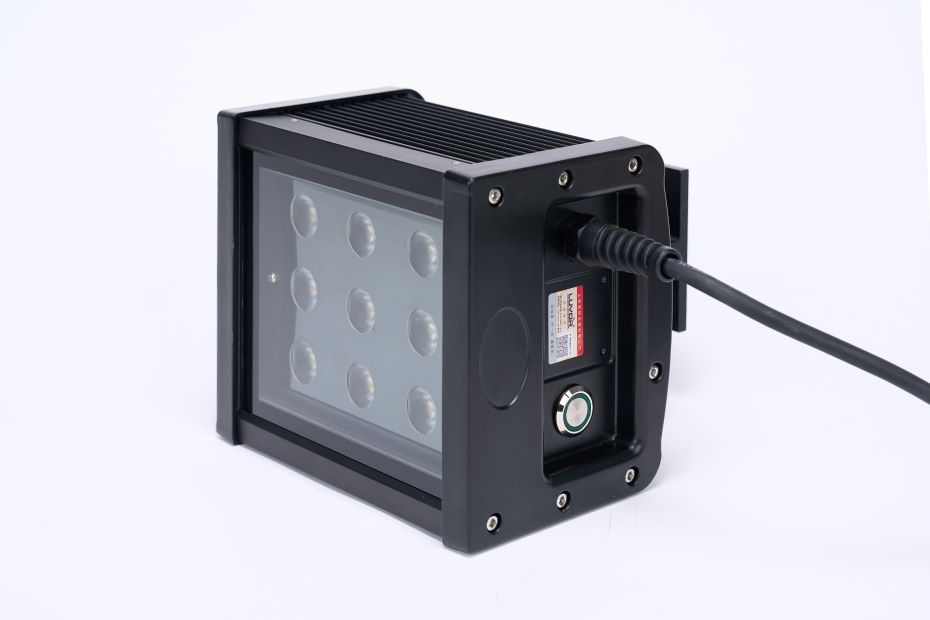LUYOR-3109高強(qiáng)度紫外催化光源促銷
LUYOR-3109紫外光源采用了9顆365nm大功率led,安裝有二次光學(xué)透鏡,輸出紫外線強(qiáng)度高,...
2024-08-08
LUYOR-3109紫外光源采用了9顆365nm大功率led,安裝有二次光學(xué)透鏡,輸出紫外線強(qiáng)度高,...
2024-08-08
KillerRed是個(gè)完全由基因編碼的光毒性紅色熒光蛋白,可接受綠色光照(540~580nm)生成活...
2024-04-29
中國(guó)科學(xué)院南京土壤研究所彭新華研究員團(tuán)隊(duì)陳晏副研究員在農(nóng)田長(zhǎng)期多樣化種植下,種間植物根際對(duì)話調(diào)控土壤...
2024-04-07咨詢熱線
021-64195798作者:紫外光源事業(yè)部時(shí)間:2019-11-05 08:27:50瀏覽1698 次
Crosslinking is the process of chemically joining two or more molecules by a covalent bond. Crosslinking reagents contain reactive ends to specific functional groups (primary amines, sulfhydryls, etc.) on proteins or other molecules.
The availability of several chemical groups in proteins and peptides make them targets for conjugation and for studyusing crosslinking methods. Crosslinkers also are commonly used to modify nucleic acids, drugs and solid surfaces.
Photoreactive Crosslinker需要用紫外線燈照射進(jìn)行分子活化,美國(guó)路陽(yáng)公司生產(chǎn)的LUYOR-3410高強(qiáng)度紫外線燈、LEA-280B 管式紫外線燈(2x8w 365nm自濾色紫外線燈管)能夠滿足此應(yīng)用。
Crosslinking is the process of chemically joining two or more molecules by a covalent bond. Crosslinking reagents contain reactive ends to specific functional groups (primary amines, sulfhydryls, etc.) on proteins or other molecules.
The availability of several chemical groups in proteins and peptides make them targets for conjugation and for studyusing crosslinking methods. Crosslinkers also are commonly used to modify nucleic acids, drugs and solid surfaces.
Photoreactive Crosslinker Chemistry
用于標(biāo)記和交聯(lián)蛋白質(zhì)和生物分子的試劑中可光活化的反應(yīng)性化學(xué)基團(tuán)包括芳基疊氮化物(苯基疊氮化物)和重氮基。本文介紹了這類試劑的反應(yīng)化學(xué)和生物學(xué)研究應(yīng)用。
Photo-activatable reactive chemical groups in reagents for labeling and crosslinking proteins and biomolecules include aryl azides (phenyl azides) and diazirines. This article describes the reaction chemistries and biology research applications of this class of reagents.
光反應(yīng)性交聯(lián)劑反應(yīng)性基團(tuán)
光活化(或光化學(xué))交聯(lián)反應(yīng)需要光能來(lái)引發(fā)。光反應(yīng)性基團(tuán)是化學(xué)惰性的化合物,當(dāng)暴露于紫外線或可見(jiàn)光時(shí)會(huì)發(fā)生反應(yīng)。實(shí)際上,用于交聯(lián)應(yīng)用的試劑中使用的所有光反應(yīng)性基團(tuán)品種都需要暴露于紫外光(UV光)中以進(jìn)行分子活化。下圖提供了可光活化交聯(lián)劑和UV交聯(lián)應(yīng)用中使用的儀器類型的示例。

Photoreactive crosslinker reactive groups
Photo-activatable (or photo-chemical) crosslinking reactions require energy from light to initiate. Photoreactive groups are chemically inert compounds that become reactive when exposed to ultraviolet or visible light. Practically all varieties of photoreactive groups used in reagents for crosslinking applications require exposure to ultraviolet light (UV light) for molecular activation. The following image provides an example of the type of instrument used with photoactivatable crosslinkers and UV-crosslinking applications.
代表紫外線燈。LEA-280B 高強(qiáng)度紫外線燈是緊湊的紫外燈,特別是用于與可光活化交聯(lián)劑和UV交聯(lián)方法中使用的365nm的撥號(hào)可選擇波長(zhǎng)的設(shè)置。
Representative ultraviolet lamp. LEA-280B UV Lamps are compact, ultraviolet lamps with 365 nm dial-selectable wavelength settings especially for use with photoactivatable crosslinkers and UV-crosslinking methods.
對(duì)于與生物樣品和實(shí)驗(yàn)進(jìn)行交聯(lián)和標(biāo)記應(yīng)用,光化學(xué)反應(yīng)基團(tuán)比嚴(yán)格的熱化學(xué)試劑具有某些優(yōu)勢(shì)。最重要的是,它們使在實(shí)驗(yàn)的早期步驟中添加試劑成為可能,然后在隨后的某個(gè)步驟中引發(fā)交聯(lián)(通過(guò)暴露于紫外線),從而與目標(biāo)特定生物學(xué)條件相協(xié)調(diào)。另外,這些基團(tuán)中的許多基團(tuán)將與它們?cè)诩せ詈蟮亩虝r(shí)間內(nèi)遇到的蛋白質(zhì)中幾個(gè)常見(jiàn)功能基團(tuán)中的任何一個(gè)綴合。此功能使它們?cè)诓东@蛋白質(zhì)相互作用中特別有用(請(qǐng)參見(jiàn)下面的討論)。已摻入用于生物共軛技術(shù)的交聯(lián)和標(biāo)記化合物的光反應(yīng)性基團(tuán)包括芳基疊氮化物,疊氮基甲基香豆素,二苯甲酮,蒽醌,某些重氮化合物,重氮基和補(bǔ)骨脂素衍生物。這些蛋白質(zhì)生物學(xué)研究中最有用的是芳基疊氮化物和重氮。
蛋白質(zhì)交聯(lián)中使用的選定的光反應(yīng)性化學(xué)基團(tuán)。傳統(tǒng)上,最廣泛使用的是芳基疊氮化物(也稱為苯基疊氮化物,前兩行)。補(bǔ)骨脂素(右下圖)幾乎只與RNA或DNA反應(yīng),用于標(biāo)記核酸或交聯(lián)并研究蛋白質(zhì)與核酸的相互作用。Diazirines(左下)是一類新的化合物,在蛋白質(zhì)研究中越來(lái)越流行和實(shí)用。花鍵代表標(biāo)記試劑或具有反應(yīng)性基團(tuán)的交聯(lián)劑的一端。
Photochemical reactive groups have certain advantages over strictly thermochemical reagents for crosslinking and labeling applications with biological samples and experiments. Most importantly, they make it possible to add reagents at an early step in an experiment and then to initiate crosslinking (by exposure to UV light) at some later step that coordinates with the particular biological condition of interest. Additionally, many of these groups will conjugate to any one of several common functional groups in proteins that they encounter during the brief time when they are activated. This feature makes them particularly useful in capturing protein interactions (see discussion below).
Photoreactive groups that have been incorporated into crosslinking and labeling compound for use in bioconjugate techniques include aryl azides, azido-methyl-coumarins, benzophenones, anthraquinones, certain diazo compounds, diazirines, and psoralen derivatives. The most useful of these for protein biology research are aryl azides and diazirines.
Photocleavable Linker (PC Linker) often used in the design of multi-functional single-stranded nucleotide conjugates for the selection of novel DNA or RNA-based catalysts in vitro. Photocleavable PC linker modified oligonucleotide are demonstrated in Bruker Daltonik's genoSNIP, a MALDI-TOF MS based assay system for SNP detection.
Photocleavable PC linker contained a non-nucleosidic group that can be used to link two nucleotide sequences through a short, UV photo-cleavable C3 spacer arm. Upon irradiation by UV light, photo-cleavage released oligonucleotide contain a 5-phosphorylated group with greater hybridization affinity for a complementary DNA strand than PC spacer.
Photocleavable PC linker can be incorporate at any position within an oligonucleotide. Contact Bio-Synthesis for service details.
Cleavage Protocol
Cleavage occurs by irradiation with near-UV light (300-350 nm, complete cleavage occurs within 5 minutes. Try using a Black Ray LEA-280B UV lamp at a distance of 15 cm (emission peak 365 nm, 300 nm cut-off, 1.1 mW intensity at~31 cm).